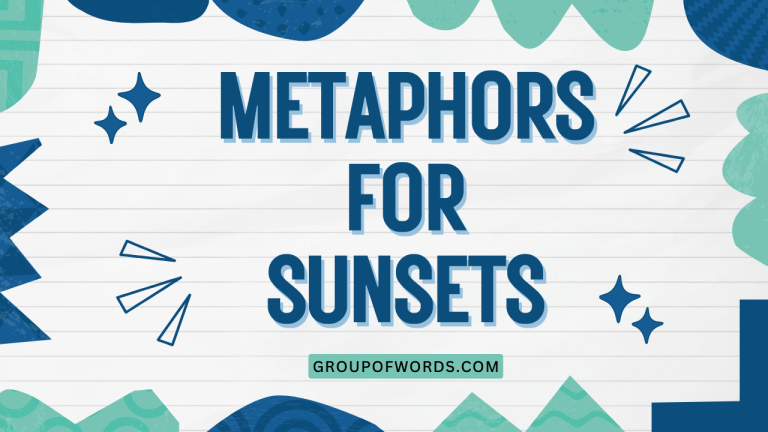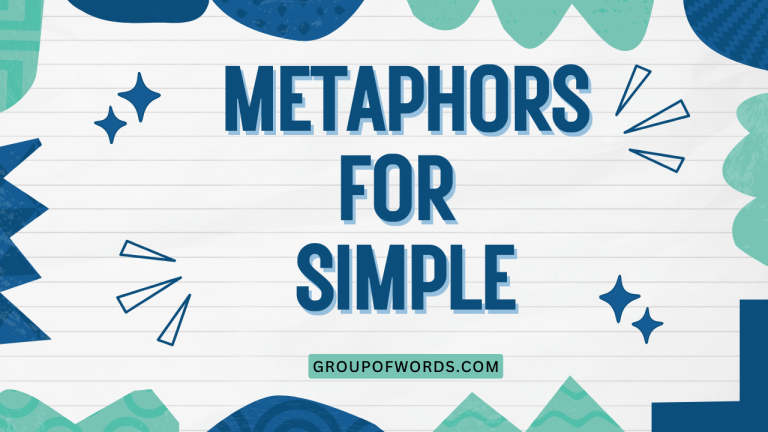Similes for Perfect: Enhancing Your English Vocabulary
Understanding similes is crucial for enriching your English language skills. Similes add color and vividness to your writing and speech, making your communication more engaging and impactful.
This article delves into the world of similes that convey the idea of perfection, exploring various expressions and their nuances. This comprehensive guide is perfect for English language learners, writers, and anyone looking to enhance their expressive capabilities.
By exploring a range of similes, this guide will not only expand your vocabulary but also deepen your understanding of how figurative language works. Whether you are preparing for an exam, writing a novel, or simply trying to communicate more effectively, mastering similes for “perfect” will undoubtedly elevate your language proficiency.
Table of Contents
- Introduction
- Definition of Simile and “Perfect”
- Structural Breakdown of Similes
- Types of “Perfect” Similes
- Examples of Similes for Perfect
- Usage Rules for Similes
- Common Mistakes with Similes
- Practice Exercises
- Advanced Topics
- Frequently Asked Questions
- Conclusion
Definition of Simile and “Perfect”
A simile is a figure of speech that directly compares two different things using the words “like” or “as.” The purpose of a simile is to create a vivid image or make a concept more understandable by relating it to something familiar. It enhances descriptive writing and adds depth to language.
The word “perfect” denotes a state of being complete, flawless, or without any defects. In different contexts, perfection can refer to visual appeal, functional excellence, moral uprightness, or skillful execution. Understanding the specific type of perfection you want to convey is key to choosing the most effective simile.
Structural Breakdown of Similes
The basic structure of a simile is straightforward. It consists of two main components: the subject being described and the object to which it is being compared, connected by the words “like” or “as.” This simple structure allows for endless creativity and variation, making similes a powerful tool for writers and speakers.
A simile typically follows this pattern:
Subject + Verb + Like/As + Object of Comparison
For example: “Her skin was as smooth as silk.” Here, “her skin” is the subject, and it is being compared to “silk” using the word “as” to highlight its smoothness.
Types of “Perfect” Similes
Perfection can manifest in various forms, and similes can be tailored to reflect these different aspects. Here are some common categories:
Visual Perfection
Visual perfection refers to aesthetic appeal, symmetry, and flawless appearance. Similes in this category often compare the subject to naturally beautiful or meticulously crafted objects.
Functional Perfection
Functional perfection describes something that works exactly as intended, without any flaws or inefficiencies. These similes often involve comparisons to well-oiled machines or precisely engineered systems.
Moral Perfection
Moral perfection represents ethical purity, righteousness, and unwavering adherence to principles. Similes in this category might compare the subject to virtuous figures or unblemished ideals.
Skill and Talent Perfection
Skill and talent perfection highlights exceptional ability, mastery, and flawless execution in a particular domain. These similes often compare the subject to renowned experts or peak performances.
Examples of Similes for Perfect
To illustrate how similes can be used to describe different types of perfection, here are some examples categorized by the type of perfection they convey.
Visual Perfection Examples
The following table provides examples of similes that describe visual perfection. These similes often use comparisons to things that are naturally beautiful, perfectly symmetrical, or flawlessly crafted.
| Simile | Explanation |
|---|---|
| As pristine as freshly fallen snow | Describes something exceptionally clean and pure in appearance. |
| Like a flawless diamond | Indicates something of exceptional beauty and without any imperfections. |
| As radiant as the morning sun | Suggests a bright, glowing, and perfect appearance. |
| Like a perfectly sculpted statue | Highlights the flawless form and artistic precision. |
| As smooth as polished glass | Emphasizes the absence of any blemishes or roughness. |
| Like a mirror image | Describes perfect symmetry and exact duplication. |
| As clear as crystal | Indicates a transparent and flawless appearance. |
| Like a painting by a master artist | Highlights the skill and beauty of the visual creation. |
| As immaculate as a wedding dress | Suggests absolute cleanliness and purity of appearance. |
| Like a rose in full bloom | Describes a state of complete and beautiful unfolding. |
| As perfect as a sunset over the ocean | Implies a natural and breathtaking beauty. |
| Like a pearl without a blemish | Indicates a flawless and precious appearance. |
| As symmetrical as a snowflake | Highlights the perfect balance and form. |
| Like a newly minted coin | Describes a fresh and flawless appearance. |
| As bright as a star in the night sky | Suggests a brilliant and captivating appearance. |
| Like a perfectly arranged bouquet | Highlights the harmonious and pleasing arrangement. |
| As sharp as a razor’s edge | Emphasizes the precision and clarity of the visual. |
| Like a pristine white canvas | Describes a blank, flawless surface. |
| As polished as ebony | Suggests a smooth, dark, and flawless appearance. |
| Like a freshly cut gem | Highlights the brilliance and perfection of the cut. |
| As vibrant as a rainbow after the rain | Implies a vivid and flawless array of colors. |
| Like a perfectly formed seashell | Describes the natural beauty and symmetry. |
| As serene as a still lake at dawn | Suggests a calm and flawless visual scene. |
Functional Perfection Examples
This table provides examples of similes that describe functional perfection. These similes often use comparisons to well-oiled machines, precisely engineered systems, or other things that work perfectly.
| Simile | Explanation |
|---|---|
| Like a well-oiled machine | Describes something that functions smoothly and efficiently without any problems. |
| As precise as a Swiss watch | Indicates exceptional accuracy and reliability. |
| Like a finely tuned engine | Highlights the optimized performance and flawless operation. |
| As reliable as clockwork | Suggests consistent and dependable functionality. |
| Like a seamless operation | Describes a process that runs without any disruptions or errors. |
| As efficient as a computer algorithm | Indicates optimal performance and resource utilization. |
| Like a perfectly executed plan | Highlights the flawless implementation and successful outcome. |
| As smooth as silk | Emphasizes the effortless and seamless operation. |
| Like a well-rehearsed orchestra | Describes a coordinated and harmonious performance. |
| As effective as a well-aimed arrow | Suggests direct and successful achievement of a goal. |
| Like a synchronized swimming routine | Implies perfect coordination and timing. |
| As streamlined as a bullet train | Indicates efficiency and speed without any wasted effort. |
| Like a flawless assembly line | Describes a process with no defects or interruptions. |
| As dependable as the rising sun | Suggests unwavering reliability and consistency. |
| Like a well-managed ecosystem | Highlights the balanced and harmonious functioning of a system. |
| As punctual as a train on its tracks | Indicates precise timing and reliability. |
| Like a self-regulating system | Describes something that maintains its perfect state automatically. |
| As functional as a well-designed tool | Emphasizes the effectiveness and utility of the object. |
| Like a well-oiled bicycle chain | Suggests smooth and effortless movement. |
| As consistent as the tides | Indicates a predictable and reliable pattern. |
| Like a precisely calibrated instrument | Highlights the accuracy and precision of the device. |
| As unstoppable as a freight train | Implies relentless and flawless progress. |
| Like a perfectly built bridge | Describes structural integrity and flawless design. |
Moral Perfection Examples
The following table provides examples of similes that describe moral perfection. These similes often use comparisons to virtuous figures, unblemished ideals, or other things that represent ethical purity.
| Simile | Explanation |
|---|---|
| As virtuous as a saint | Describes someone with exceptional moral character and righteousness. |
| Like an angel in human form | Indicates purity, kindness, and moral perfection. |
| As pure as the driven snow | Highlights innocence and moral cleanliness. |
| Like a beacon of integrity | Suggests unwavering honesty and ethical strength. |
| As righteous as a judge | Describes someone who consistently upholds justice and fairness. |
| Like a moral compass | Indicates a strong sense of right and wrong that guides actions. |
| As honest as the day is long | Highlights unwavering truthfulness and transparency. |
| Like a paragon of virtue | Describes someone who embodies all the best moral qualities. |
| As ethical as a philosopher | Suggests a deep commitment to moral principles and reasoning. |
| Like a guardian of justice | Implies a strong dedication to fairness and equality. |
| As selfless as a mother’s love | Highlights unconditional care and sacrifice for others. |
| Like a shining example of integrity | Indicates someone whose actions consistently reflect high moral standards. |
| As noble as a knight | Describes someone who is honorable and courageous. |
| Like a pillar of morality | Suggests unwavering ethical strength and support for others. |
| As benevolent as a philanthropist | Highlights kindness, generosity, and a desire to help others. |
| Like a conscience without blemish | Indicates a flawless and unwavering moral guide. |
| As principled as a founding father | Suggests a strong commitment to core values and ideals. |
| Like a champion of the oppressed | Describes someone who fights for justice and equality. |
| As fair as the scales of justice | Highlights impartiality and equal treatment for all. |
| Like a model of ethical behavior | Indicates someone whose actions set a high standard for others. |
| As honorable as a sworn oath | Implies a deep commitment to truth and integrity. |
| Like a beacon of hope in darkness | Suggests moral clarity and guidance in difficult times. |
| As incorruptible as a diamond | Highlights resistance to temptation and moral purity. |
Skill and Talent Perfection Examples
This table provides examples of similes that describe skill and talent perfection. These similes often use comparisons to renowned experts, peak performances, or other things that represent exceptional ability.
| Simile | Explanation |
|---|---|
| Like a virtuoso on the violin | Describes someone with exceptional skill and mastery in their craft. |
| As graceful as a ballerina | Indicates fluid, elegant, and flawless movement. |
| Like a surgeon with steady hands | Highlights precision and expertise in a delicate task. |
| As skilled as a master craftsman | Suggests exceptional ability and artistry in creating objects. |
| Like a chess grandmaster | Describes strategic brilliance and tactical perfection. |
| As eloquent as a seasoned orator | Indicates persuasive and flawless communication skills. |
| Like a painter with a perfect stroke | Highlights the flawless execution and artistic talent. |
| As talented as a prodigy | Suggests exceptional natural ability and early mastery. |
| Like a composer with perfect pitch | Describes flawless musical ability and precision. |
| As agile as a gymnast | Indicates exceptional physical coordination and flexibility. |
| Like a seasoned pilot landing a plane | Highlights expertise and precision in a complex task. |
| As sharp as a whip | Suggests quick-wittedness and mental agility. |
| Like a quarterback throwing a perfect spiral | Describes precision and accuracy in athletic performance. |
| As precise as a laser beam | Indicates pinpoint accuracy and focus. |
| Like a conductor leading an orchestra | Highlights the ability to orchestrate and harmonize complex elements. |
| As artistic as a sculptor | Suggests creative talent and the ability to shape beautiful forms. |
| Like a coder writing flawless code | Describes precision and error-free execution in programming. |
| As strategic as a general in battle | Indicates tactical brilliance and leadership skills. |
| Like a dancer with perfect poise | Highlights balance, grace, and control in movement. |
| As adept as a magician | Suggests skillful manipulation and illusion. |
| Like a chef creating a culinary masterpiece | Describes exceptional skill and artistry in cooking. |
| As inventive as an engineer | Highlights creativity and problem-solving skills. |
| Like a writer crafting a perfect sentence | Describes precision and artistry in writing. |
Usage Rules for Similes
Using similes effectively requires an understanding of their structure, context, and potential pitfalls. Here are some guidelines to ensure you use similes correctly and creatively:
Maintaining Simile Structure
Ensure your simile adheres to the basic structure: Subject + Verb + Like/As + Object of Comparison. Deviating from this structure can lead to confusion or grammatical errors.
Make sure the comparison is clear and logical.
Appropriate Contexts
Consider the context in which you are using the simile. The comparison should be relevant and appropriate for the tone and subject matter.
A simile that works well in a poem might not be suitable for a formal report.
Avoiding Clichés
Be mindful of clichés. Overused similes lose their impact and can make your writing seem unoriginal.
Strive to create fresh and imaginative comparisons. For example, instead of “as busy as a bee,” try “as industrious as an ant colony.”
Common Mistakes with Similes
Even experienced writers sometimes make mistakes when using similes. Here are some common errors to avoid:
| Incorrect | Correct | Explanation |
|---|---|---|
| Her voice was like a song. | Her voice was like a melodious song. | The original simile is too generic. Adding “melodious” makes it more specific and descriptive. |
| He ran as fast. | He ran as fast as a cheetah. | The simile is incomplete. “As fast” needs a comparison object to be meaningful. |
| The building was like tall. | The building was like a tall skyscraper. | “Tall” is an adjective and needs to be part of a noun phrase for the comparison to work. |
| She is as good than gold. | She is as good as gold. | “Than” is used for comparisons involving inequality. “As…as” is used for comparisons of equality. |
| The plan was like success. | The plan was like a guaranteed success. | The simile should compare two concrete things. “Success” is an abstract concept and needs to be made more concrete. |
Practice Exercises
Test your understanding of similes with these exercises. Each exercise focuses on a different aspect of simile usage.
Exercise 1: Fill in the Blanks
Complete the following sentences with appropriate similes.
| Question | Answer |
|---|---|
| 1. The cake was __________ as a cloud. | 1. The cake was as light as a cloud. |
| 2. Her eyes were __________ like sapphires. | 2. Her eyes were bright like sapphires. |
| 3. He ran __________ as a deer. | 3. He ran as swiftly as a deer. |
| 4. The music was __________ like a gentle breeze. | 4. The music was soothing like a gentle breeze. |
| 5. The room was __________ as a tomb. | 5. The room was as silent as a tomb. |
| 6. His smile was __________ as the sun. | 6. His smile was as warm as the sun. |
| 7. The answer was __________ as day. | 7. The answer was as clear as day. |
| 8. She sang __________ as an angel. | 8. She sang as beautifully as an angel. |
| 9. The ice was __________ as glass. | 9. The ice was as smooth as glass. |
| 10. The coffee was __________ as mud. | 10. The coffee was as thick as mud. |
Exercise 2: Sentence Completion
Complete the following sentences using similes to describe perfection.
| Question | Answer |
|---|---|
| 1. Her performance was __________ . | 1. Her performance was like a perfectly choreographed dance. |
| 2. The garden looked __________ . | 2. The garden looked as immaculate as a botanical illustration. |
| 3. His argument was __________ . | 3. His argument was as airtight as a sealed vault. |
| 4. The machine ran __________ . | 4. The machine ran like a well-oiled clock. |
| 5. The painting was __________ . | 5. The painting was as flawless as a Renaissance masterpiece. |
| 6. The plan unfolded __________ . | 6. The plan unfolded like a perfectly executed strategy. |
| 7. Her character was __________ . | 7. Her character was as virtuous as a saint’s. |
| 8. The athlete moved __________ . | 8. The athlete moved as gracefully as a gazelle. |
| 9. The cake tasted __________ . | 9. The cake tasted like a slice of heaven. |
| 10. The code was written __________ . | 10. The code was written as cleanly as a textbook example. |
Exercise 3: Simile Creation
Create your own similes to describe the following scenarios, focusing on the concept of perfection.
| Scenario | Your Simile |
|---|---|
| 1. A perfectly organized office. | 1. The office was as orderly as a museum exhibit. |
| 2. A flawlessly executed musical performance. | 2. The performance was like a symphony conducted by angels. |
| 3. A morally upright individual. | 3. He was as honest as the day is long. |
| 4. A perfectly functioning machine. | 4. The machine ran as smoothly as a hot knife through butter. |
| 5. A visually stunning landscape. | 5. The landscape was like a painting come to life. |
| 6. A perfectly baked cake. | 6. The cake was as delightful as a dream. |
| 7. A flawlessly written novel. | 7. The novel was as captivating as a siren’s song. |
| 8. A completely successful project. | 8. The project was like a well-charted journey. |
| 9. A perfectly clear explanation. | 9. The explanation was as lucid as a mountain spring. |
| 10. A morally impeccable decision. | 10. The decision was as just as the scales of justice. |
Advanced Topics
For those looking to delve deeper into the world of similes, here are some advanced concepts to explore:
Similes vs. Extended Metaphors
While similes make direct comparisons, extended metaphors develop a comparison over several lines or even an entire piece of writing. Understanding the difference between the two can help you create more nuanced and impactful imagery.
Cultural Nuances in Similes
Similes can be heavily influenced by culture. A comparison that resonates in one culture might not make sense or have the same impact in another.
Being aware of these cultural nuances can help you communicate more effectively with diverse audiences.
Frequently Asked Questions
Here are some frequently asked questions about similes:
- What is the difference between a simile and a metaphor?
A simile uses “like” or “as” to make a direct comparison between two things, while a metaphor implies a comparison without using these words. For example, “He is like a lion” (simile) vs. “He is a lion” (metaphor).
- Can a simile be a cliché?
Yes, overused similes become clichés. To avoid this, try to create original and imaginative comparisons that are specific to the subject you are describing.
- How can I make my similes more effective?
Use vivid and specific language, choose comparisons that are relevant and logical, and avoid clichés. The more unique and insightful your simile, the more impact it will have.
- Are similes only used in writing?
No, similes are used in both writing and speech. They can add color and emphasis to everyday conversations as well as formal presentations.
- What if I can’t think of a good simile?
Consider the qualities you want to emphasize and brainstorm objects or concepts that share those qualities. Use a thesaurus or online resources to find related words and ideas.
- Is it okay to mix similes and metaphors in the same piece of writing?
Yes, it is perfectly acceptable, and often effective, to mix similes and metaphors. Just ensure that the figurative language is used consistently and complements the overall tone and style of your writing.
- How do I know if my simile makes sense?
Ask yourself if the comparison is logical and if it effectively conveys the intended meaning. You can also get feedback from others to see if they understand the comparison.
- Can a simile be too complex?
Yes, a simile can be too complex if it uses obscure references or convoluted language that the reader or listener cannot easily understand. The best similes are clear, concise, and relatable.
Conclusion
Mastering similes is a valuable skill that can significantly enhance your communication abilities. By understanding the structure, types, and usage rules of similes, you can create vivid and memorable imagery in your writing and speech.
Remember to be creative, avoid clichés, and always consider the context in which you are using the simile.
Continue practicing and experimenting with different comparisons to refine your skills. The more you use similes, the more natural and intuitive they will become.
With dedication and effort, you can harness the power of similes to express yourself with greater clarity, creativity, and impact.






